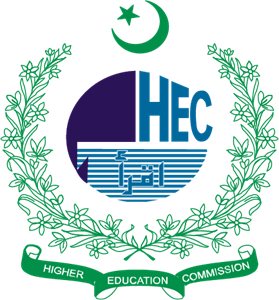Exploring Sustainability through the Lens of Pakistani Artists
Abstract
 Abstract Views: 0
Abstract Views: 0
Sustainability in fine arts represents a framework that incorporates environmental consciousness into artistic creation and production. This approach has influenced artists to prioritize the use of eco-friendly and energy saving techniques. Material selection is one of the important parts of this practice as it effects the environment and the aesthetics of the artwork. Artists are opting for recyclable, non-toxic and renewable materials to reduce waste and minimize carbon emissions. These materials carry their own stories and significance, giving an insightful meaning to the artwork. The move towards sustainability encourages artists to experiment with material in order to understand its impact on the environment along with its artistic presence. The research focuses on three Pakistani artists and their series of artworks which is particularly created on sustainability subject matter. The methodology adopted for this paper is qualitative along with analytical approach with a focus on visual analysis which is further supported by artist interviews and secondary literature. Key findings of this research are that in Pakistan sustainable art practice is not just a trend in creating art but it’s a step towards spreading awareness where material plays an important role. Through carefully selected material, artists create artworks that build a dialogue between the work and viewer. In future, these practices and introduction of new media can pave way for upcoming researches and artists to put conscious effort in creating art pieces that align with the environment.
Downloads
References
Akhter, P., Arshad, A., & Hussain, M. (2024). A review on environmental impacts of paints and strategies for producing eco-friendly paints. International Journal of Environmental Science and Technology, 22, Article e05760. https://doi.org/10.1007/s13762-024-05760-z
Ali, S. (2021, March 28). Exhibition: The art of war. Dawn. http://www.dawn.com/news/1615013
Ali, S. (2018). Reframing the miniature. Newsline. http://newslinemagazine.com/magazine/reframing-the-miniature/
Chris. (2023, May 12). Is acrylic paint natural or synthetic? Exploring sustainable options for your home. The Organic & Natural Paint Co. https://organicnaturalpaint.co.uk/faq/is-acrylic-paint-natural-or-synthetic-exploring-sustainable-options-for-your-home/
Dadi, I. (2017, September 14). A brief history of Pakistani art and the people who shaped it. Scroll.in. https://scroll.in/magazine/850531/a-brief-history-of-pakistani-art-and-the-people-who-shaped-it
Grosvenor Gallery. (2021, September 11–October 1). Patterns of the past: Weaving heritage in “Pakistani” art [Exhibition curated by Dr. Zehra Jumabhoy]. Grosvenor Gallery. https://www.grosvenorgallery.com/exhibitions/322/works/
Goldsmith, R. (2021). Sustainable art: The role of environmentally conscious creativity in contemporary art. Routledge.
Jean, H. (2019). Connecting art and science: An artist’s perspective on environmental sustainability [Doctoral dissertation, University of Vermont]. Scholar Works. https://scholarworks.uvm.edu/envstheses/54/
Liaqat, S. (2023). Found objects as art: Influence of Marcel Duchamp on contemporary Pakistani art. Journal of Development and Social Sciences, 4(3), 945–955. https://doi.org/10.47205/jdss.2023(4-iii)86
Manaku. (ca. 1740). “The Nightmare Dream of a King: The Fearsome Aftermath of the Battle of Kurukshetra,” Folio from the unfinished “Small Guler” Bhagavata Purana (The Ancient Story of God). The Metropolitan Museum of Art. https://www.metmuseum.org/art/collection/search/662767
Mirza, Q. (2020, January 5). Dissecting post modernity. The News International. http://www.thenews.com.pk/tns/detail/1592976-dissecting-post-modernity
Mirza, Q. (2021, August 22). A SIM-ful of messages. The News on Sunday. https://www.thenews.com.pk/tns/detail/880571-a-sim-ful-of-messages
Sheikh, N. (2021). Exhibition: Making a connection. Dawn. https://www.dawn.com/news/1645874
Pandey, P., & Kiran, U. V. (2020). Degradation of paints and its microbial effect on health and environment. Journal of Critical Reviews, 7(19), 4879–4884.
Suleman, A. (2021). Memory may be a Paradise 1. Artsy. https://www.artsy.net/artwork/adeela-suleman-memory-may-be-a-paradise-1
Syed, K., & Abdullah, S. (2015). Chronicling Pakistan's art movements from traditional to contemporary: 1960-2011. Wacana Seni Journal of Arts Discourse, 14, 31–58.
Syed, Z., & Kandel, D. (2023, May 3). Karachi artist Raheela Abro is using discarded SIM cards for her artwork. Arts Help. https://www.artshelp.com/karachi-artist-raheela-abro-discarded-sim-cards-sustainablity/
Zia, S. F. (2021, September 27). Fabric and frolic: A case of identity and belonging. The Karachi Collective. https://thekarachicollective.com/fabric-and-frolic/
Zia, S. F. (2018, September 2). Exhibition: The sacred grid. Dawn. http://www.dawn.com/news/1430118

Copyright (c) 2025 Fariha Rashid, Suffah Naeem

This work is licensed under a Creative Commons Attribution 4.0 International License.
JAABE follows an open-access publishing policy and full text of all published articles is available free, immediately upon publication of an issue. The journal’s contents are published and distributed under the terms of the Creative Commons Attribution 4.0 International (CC-BY 4.0) license. Thus, the work submitted to the journal implies that it is original, unpublished work of the authors (neither published previously nor accepted/under consideration for publication elsewhere). On acceptance of a manuscript for publication, a corresponding author on the behalf of all co-authors of the manuscript will sign and submit a completed Copyright and Author Consent Form.
Copyright (c) The Authors





